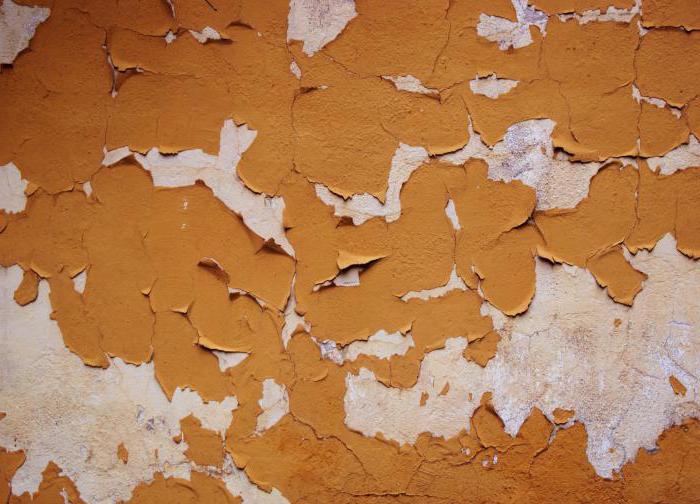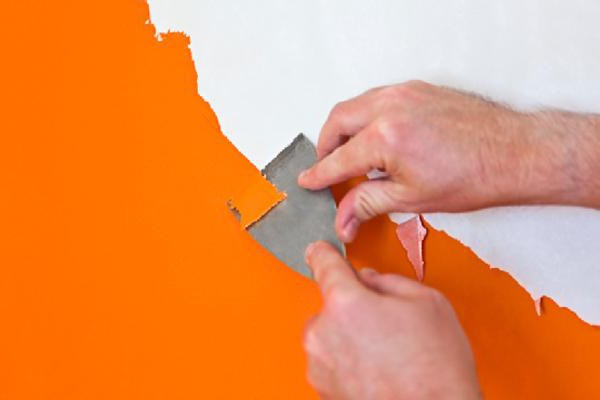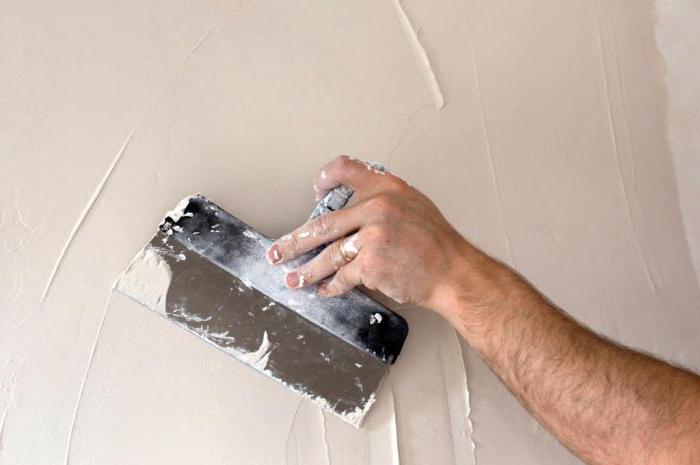Almost any repair begins with the alignment of the walls before their subsequent decoration. However, what if the surface was painted? Is it possible to put putty on the paint or is it worth it to clean the wall?
Study of surface properties
In order to find out whether it is possible to put putty on an old paint, its variety should be determined. There are several main varieties:
- If, upon contact of the painted surface with water, the paint begins to bubble and rinse off, this means that the walls were covered with water-based paint. Is it possible to put putty on a water-based paint? Under the influence of moisture, the paint layer is destroyed and washed off, so the putty applied, which also contains water, simply will not hold.
- If the surface is smooth and shiny, and also does not respond to contact with water, this means that the walls are painted with paint based on drying oil or solvents. Is it possible to put putty on oil paint? There is no single answer to this question. The fact is that you can putty on the old paint, which is still holding, however, if chips, cracks and swelling are visible on the coating, the surface of the wall will have to be cleaned.

The difficulty lies in the fact that even if at first glance the wall covered with oil paint looks complete, it still requires a thorough check for chips. To do this, the surface is gently tapped and probed with a special spatula to detect air bubbles under the paint.
Putty on acrylic paint
Acrylic is not as popular as the varieties of paints described above. However, it is also used for wall decoration. Is it possible to put putty on acrylic paint? Acrylic-based pigment is as durable as its oil counterparts.
To ensure good adhesion to the smooth surface of the painted wall, a layer of soil with fine abrasive particles should be applied. They penetrate into the pores and roughnesses on the paint, which will create an optimal rough surface for good adhesion with subsequent puttying.
How to remove old paint
In most cases, the old coating must be removed. There are several ways to do this:
- Aqueous emulsion paint is thoroughly washed off with water, after which the surface of the wall must be well dried before applying putty or other finishing materials.
- The oil paint is mechanically removed. It is a surface scraping using special tools. This method takes a lot of time, leaves a lot of dust and dirt. It is recommended to use personal protective equipment - glasses and a respirator.
- The chemical method is the use of special reagents that destroy the paint layer. Often used substances that can harm a person, so it is recommended that all manipulations be carried out with gloves, glasses and a respirator.
- The thermal method involves heating the surface of the paint with a building hairdryer. As a result, the coating will begin to separate from the walls, and it will be quite easy to clean with a spatula and other tools.

Experienced builders recommend that you carefully clean the old coating from the walls. If places of paint remain in places, you need to make sure that they do not have swellings, because in this place the putty will peel off. In addition, such areas are subject to thorough sanding to create a rough surface.
Materials and Tools
Can I putty on paint? It is possible, but it is important to choose the right building materials and tools:
- Finishing work on the paint is carried out by finishing putty, which has a small fraction and is applied in a thin layer. This is necessary in order to get a perfectly even and smooth wall surface at the exit.
- It is recommended to use gypsum or acrylic putty. She meets all the necessary requirements.
- To mix the composition, you may need a plastic bucket and a drill with a mixer nozzle.
- Coarse sandpaper is used to sand the surface of the wall.
- A small spatula is needed to scrape off paint that is unstable on the surface of the wall.
- A large spatula will be needed for applying putty layers.
When choosing a spatula, you need to pay attention to the fact that its blade should be perfectly flat and also slightly elastic for the convenience of applying the composition.
Surface preparation
The surface, cleaned of old paint, must be prepared for the application of putty. To do this, it is worth inspecting the wall to detect dirty spots that must be washed off. The surface is then primed to ensure good adhesion of the putty to the wall.
If you can’t get rid of the paint, use the following methods:
- A smooth painted surface does not adhere well to the putty, therefore, notches should be made on the wall with a knife or other sharp tool.
- In some cases, builders recommend scrubbing the surface with an iron brush or sandpaper to create a rough surface.
Any of the selected methods guarantees a good result.
Soil application
The use of a primer to obtain a high-quality result is simply necessary. It must be applied to the surface of the wall before the start of the putty. It can also fix the putty layer.
Experienced builders recommend using a quartz primer, which has large fractions of mineral inclusions in order to create the perfect surface for fixing the putty on the wall. The finishing primer, which is applied to the putty before subsequent finishing, is used with finer fractions in order not to stand out too much against the background of a smooth wall.
Puttying on paint
Is it possible to put the finishing putty on the paint? This option of finishing work is acceptable, but you should adhere to these recommendations:
- When preparing the surface for puttying, it is necessary to clean the wall from dirt and dust, as well as to sand the surface, which could not be cleaned from paint.
- The thickness of the layers of the applied putty should be minimal. This is also indicated by the manufacturer on the label.
- It is recommended to apply a layer of soil before puttying.
- If in some place it began to lag behind the paint, this means either a poorly prepared surface, or too thick a layer of applied material.
- It is important to pay sufficient attention to drying the mixture before continuing with finishing work.
- At the end of the putty, it is necessary to coat the surface with a primer again.

Often, concrete contact is used for these purposes. This is the name of the building material. which contains large particles, as well as substances that bind them. This type of putty holds firmly to the wall for many years, and also does not absorb moisture. Many people who decide to carry out repairs themselves are interested in the question: is it possible to put putty on paint? Answer: it is possible if the recommendations indicated above are observed.
Putty car
Putty is also used in car repair. Of course, this is far from the material with which the walls are putty, but at the same time the same question arises: is it possible to put putty on the paint of a car? Doing this categorically is not worth it, such a design will not hold and will disappear immediately after drying. It is important to remove the paint from the machine and strip the area to bare metal. Only after that the car is ready to putty.
Conclusion
Can I putty on paint? Coloring pigments are a fairly common finishing material, however, during subsequent repairs they can bring some inconvenience. Of course, it is possible to putty the painted walls, but before that you should study the condition of the paint, and also try to remove it at least chastically. This is especially true for those places where the coating began to separate from the surface of the wall from time to time.
The difficulty may be that the putty does not want to lie flat on the paint, even if it is previously prepared in accordance with all the rules. In this case, a building grid with small divisions is used, which is mounted on the wall. Putty is well kept on such a mesh even when a fairly thick layer of material is applied.
Repair is always complexity and unforeseen circumstances. Therefore, when puttying painted surfaces, it is worthwhile to prepare for additional costs if something goes wrong.